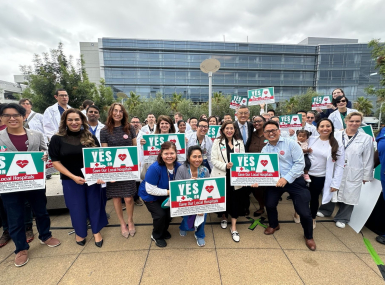CMS enforces requirement for State Medicaid programs to provide Medication-Assisted Treatment
Author

Blaire Bryant
Upcoming Events
Related News

Key Takeaways
On October 1, the Center for Medicaid and Medicare Services (CMS) issued a reminder notice to state Medicaid programs that they must now cover all forms of drugs and biologicals approved or licensed by the U.S. Food and Drug Administration (FDA) for Medication Assisted Treatment (MAT) as mandatory benefit to be used for the treatment of Opioid Use Disorder (OUD).
The requirement was first set in statute by the Substance Use-Disorder Prevention that Promotes Opioid Recovery and Treatment for Patients and Communities (SUPPORT) Act of 2018 (P.L. 115-271), a broad bipartisan legislation enacted to help combat the opioid epidemic. The mandate was established under section 1905(a)(29) of the SUPPORT Act, which amended the Social Security Act by adding MAT as a Medicaid covered service.
Medication Assisted Treatment (MAT) involves the use of medication along with counseling and other behavioral health therapies to treat substance use disorders — primarily opioid use disorder — and prevent overdose. The choice and dosage of medication is tailored to each patient, following a thorough assessment by a licensed physician that accounts for a patient’s different situations such as pregnancy, mental illness or incarceration.
While the intended goal of this mandate was to increase access to evidence-based treatment for opioid use disorder, there has been concern by some lawmakers that the requirement would increase state coverage obligations without the financial support of Medicaid rebates, which help offset the cost of prescription drugs covered under the program. The notice addresses these concerns by ensuring the state’s ability to seek additional Medicaid revenue through drug rebates and clarifying that drug manufacturers will be required to pay the appropriate rebates and must comply with applicable pricing and reporting requirements.
As an integral part of the federal-state-local partnership in the Medicaid program, counties are invested in changes to the program that impact the services and revenue sources. NACo supports the use of MAT for the treatment of opioid use disorder and other addictions, while also advocating for increased funding flexibility that does not shift cost burdens to local government. NACo will continue to monitor the impact of this mandate on both the accessibility of treatment and any potential fiscal impacts on counties.
Additional Resources:
- CMS Notice to State Medicaid Directors
- County News Article: Medication Assisted Treatment for Substance Use Disorders
- A Prescription for Action: Local Leadership in Ending the Opioid Crisis

Attachments
Related News

CMS issues new guidance on Medicaid Community Engagement Requirements
On December 8, the Centers for Medicare & Medicaid Services (CMS) released a Medicaid and CHIP Services Informational Bulletin (CIB) directing states on how to implement the Medicaid community engagement requirements enacted under Section 71119 of the One Big Beautiful Bill Act legislation (Public Law 119-21), or H.R. 1.

California county sales tax measure backfills federal healthcare cuts
Santa Clara County, Calif. will raise an estimated $330 million each year from a sales tax to backfill lose Medicaid funding.
